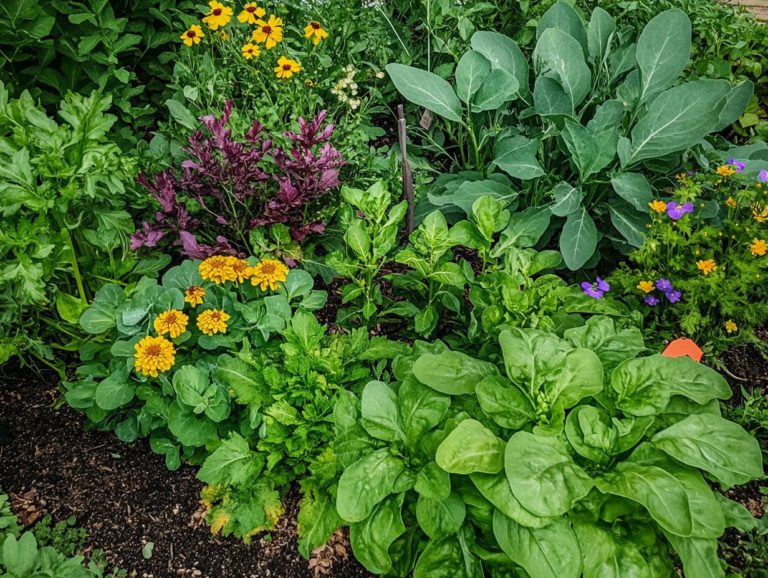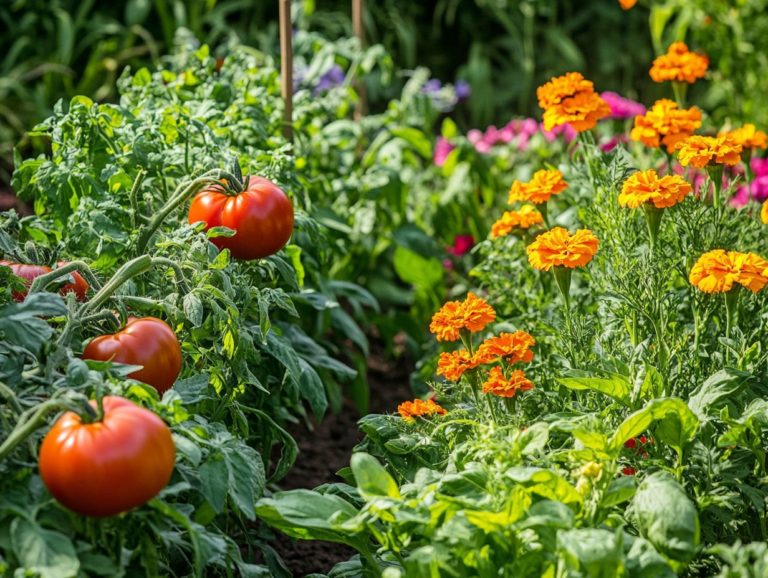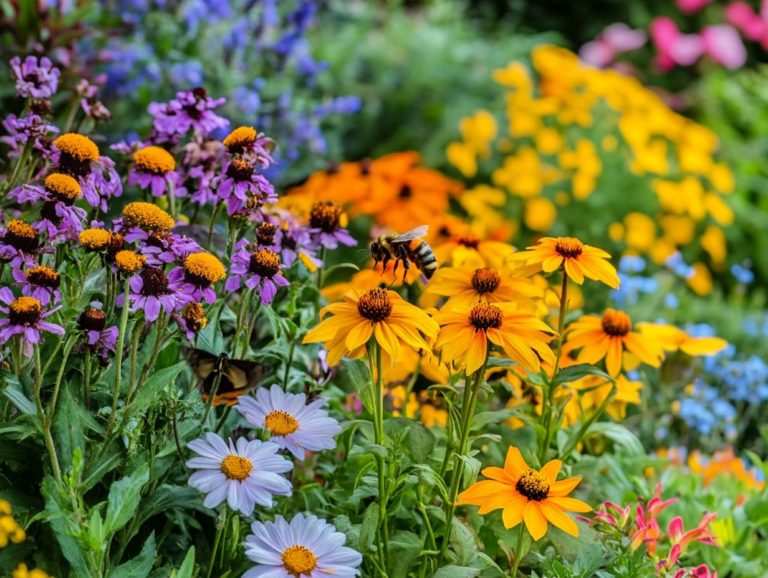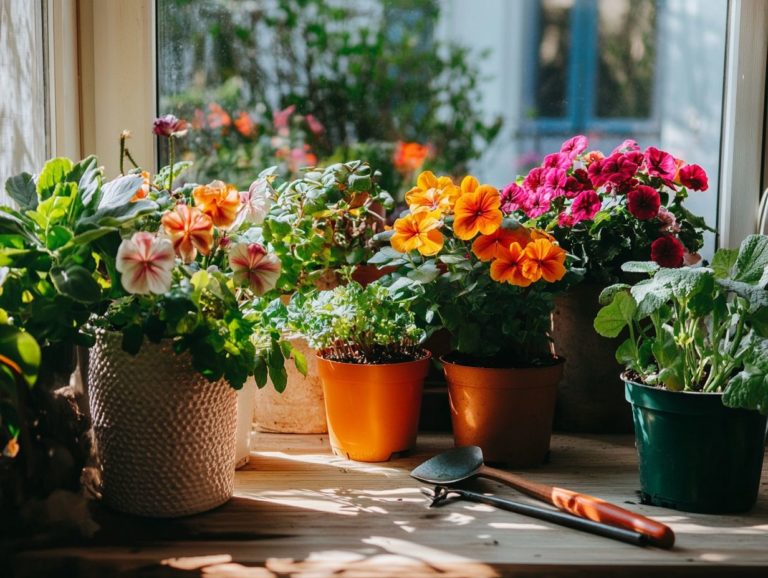“5 Plants for Natural Pest Control”
Are you seeking a way to keep pests at bay without resorting to harsh chemicals? You re in for a treat!
This article delves into five remarkable plants Marigolds, Lavender, Basil, Chrysanthemums, and Catnip that not only enhance the beauty of your garden but also act as natural pest deterrents.
Explore how these plants function, which pests they repel, and the most effective ways to weave them into your gardening routine. You ll also uncover some unexpected benefits they provide.
Get excited to transform your garden into a pest-free paradise!
Contents
Key Takeaways:
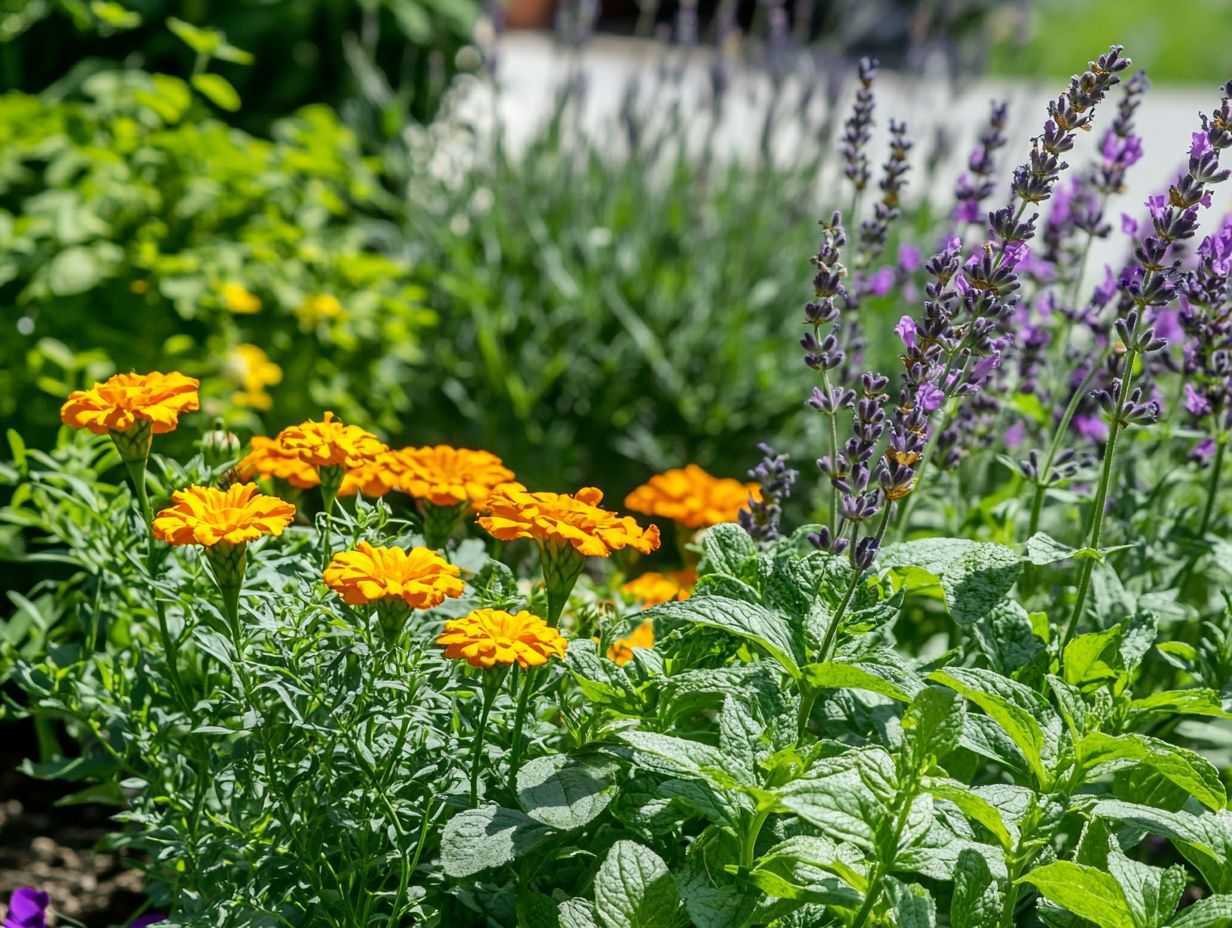
- Marigolds, lavender, basil, chrysanthemums, and catnip are effective natural pest control options, showcasing their role as pest deterrent plants.
- These plants can repel and deter a variety of pests such as mosquitoes, aphids, and fleas.
- They can be used in various forms, such as being planted in gardens, made into essential oils, or used together to help each other grow.
1. Marigolds
Marigolds, with their stunning blooms, are not just eye candy for your garden. They also play an important part in keeping pests away without chemicals.
Their unique aroma helps deter harmful insects, making them a cornerstone of sustainable gardening. Particular varieties, like French marigolds and African marigolds, are especially famous for their ability to repel nematodes and aphids.
This makes them perfect companions for your vegetable crops, such as tomatoes and peppers. By planting these vibrant flowers alongside your veggies, you can create a harmonious ecosystem where plants thrive together.
Marigolds also attract helpful pollinators. This ensures that your plants not only prosper but also contribute to the ecological balance, promoting vibrant health throughout your garden, which is key for pollinator-friendly gardening.
2. Lavender
Lavender, with its enchanting fragrance, is more than just a charming addition to your garden. It serves as a powerful pest control herb.
By repelling unwanted insects while attracting beneficial pollinators, it plays a crucial role in fostering a balanced ecosystem. This aromatic marvel specifically wards off notorious pests like moths, mosquitoes, and aphids, making it an astute choice for anyone looking to protect their plants naturally.
When planted alongside your vegetables and flowers, lavender enhances the growth of nearby crops while reducing harmful insect infestations. But lavender’s benefits don t stop at pest control.
It also has medicinal properties that can help ease anxiety and improve sleep. Whether enjoyed in tea or essential oils, its therapeutic effects elevate the gardening experience, transforming your garden into a sanctuary for your overall well-being.
3. Basil
Basil is a versatile herb that you can celebrate not just for its culinary delights but also for its prowess as a natural pest control champion.
It effectively wards off common pests like aphids and mosquitoes, offering you a sustainable alternative to harsh chemical methods. By integrating basil into your garden layouts, you can enjoy the myriad benefits of this companion plant.
Basil boosts the growth of nearby vegetables, such as tomatoes and peppers. Its robust aroma acts as a natural insect repellent, fostering a healthier ecosystem where beneficial insects can flourish.
Integrating basil into your garden promotes biodiversity, as it attracts essential pollinators like bees and butterflies, enriching the floral diversity around you. This harmonious balance minimizes the need for synthetic pesticides, giving you the power to cultivate a vibrant, chemical-free environment.
Start planting these amazing herbs and flowers today for a healthier, pest-free garden!
4. Chrysanthemums
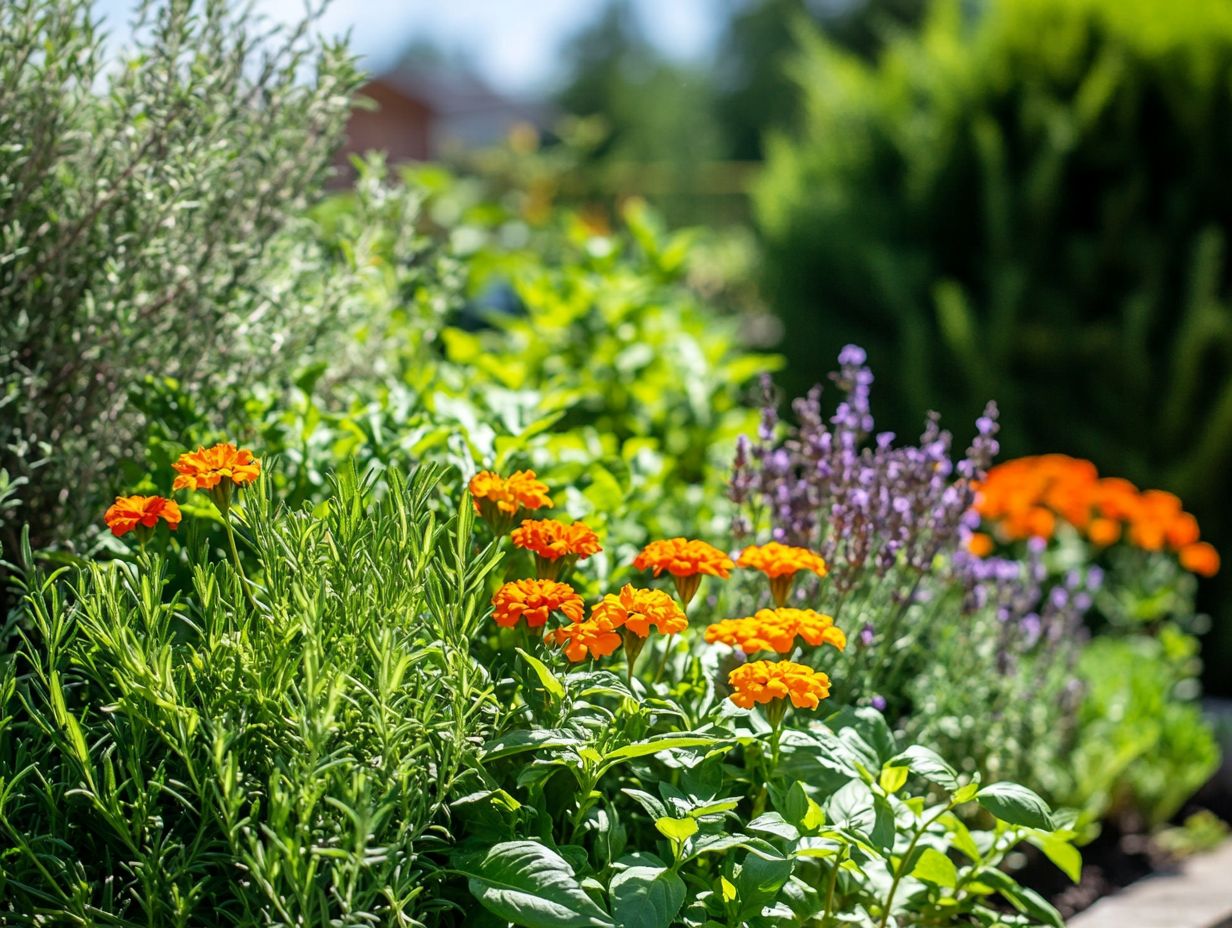
Chrysanthemums dazzle your garden with stunning blooms and help keep pests away! These amazing flowers release compounds that keep harmful insects away, making them a top choice for gardeners who prefer eco-friendly solutions.
These vibrant blooms effectively deter pesky aphids, whiteflies, and spider mites, providing an organic approach to maintaining a healthy garden. But their benefits don’t stop there. Chrysanthemums add a delightful burst of color and texture to your landscape, attracting beneficial pollinators like bees and butterflies.
This ornamental charm further enhances a balanced ecosystem, boosting biodiversity within your garden. By incorporating these resilient flowers, you elevate the aesthetic of your space and nurture a thriving environment that supports various forms of life, allowing them to coexist and flourish.
5. Catnip
Catnip is not just a feline favorite; it also plays a crucial role as a pest deterrent. They effectively repel annoying insects like mosquitoes and cockroaches, creating a healthier garden environment for both you and your pets.
This remarkable herb offers benefits beyond simple pest control. By adding catnip to your garden, you promote biodiversity, attracting beneficial insects that assist with pollination and enhance the ecosystem’s overall health.
Interestingly, catnip helps maintain a balanced garden by naturally supporting the pest population that keeps harmful insects in check. You might even discover the soothing qualities of catnip for yourself, using it in herbal teas to alleviate stress. This enhances the beauty of your surroundings and nurtures your mental well-being.
How Do These Plants Help with Pest Control?
Using plants like marigolds, lavender, basil, chrysanthemums, and catnip shows how to control pests naturally. These remarkable herbs and plants not only offer effective pest management techniques but also contribute to sustainable gardening practices, enriching the ecosystem with a delightful array of biodiversity.
Each of these plants plays a unique role in deterring unwanted insects, leveraging their natural compounds and enchanting scents. For example, marigolds release a substance that repels nematodes, while the aromatic allure of lavender can confuse and deter pests like moths. Basil attracts beneficial insects like bees and predatory wasps that help keep aphid populations in check. Chrysanthemums are particularly noteworthy, as they contain pyrethrins, which are natural insecticides that tackle pests like roaches and ants.
When you position these plants thoughtfully in companion planting arrangements, you create an ecosystem where pests are naturally kept at bay, enhancing the health of individual plants and the overall vitality of your garden.
What Types of Pests Are These Plants Effective Against?
Plants like marigolds, lavender, basil, chrysanthemums, and catnip are powerful allies against common pests, each providing distinct advantages in effective pest control and sustainable gardening.
Take marigolds, for example; they re renowned for their ability to deter nematodes and aphids. Lavender attracts beneficial insects while keeping moths and mosquitoes at bay. Basil excels at repelling flies and mosquitoes, making it an excellent companion in your herb garden. Chrysanthemums contain pyrethrins, natural insecticides that effectively tackle pests like roaches and ants. Finally, catnip not only adds a charming fragrance but also effectively fends off cockroaches and mosquitoes.
By integrating these plants into your garden, you enhance biodiversity in gardening and cultivate a more sustainable pest management strategy that reduces your reliance on chemical methods.
How Can These Plants Be Used for Pest Control?
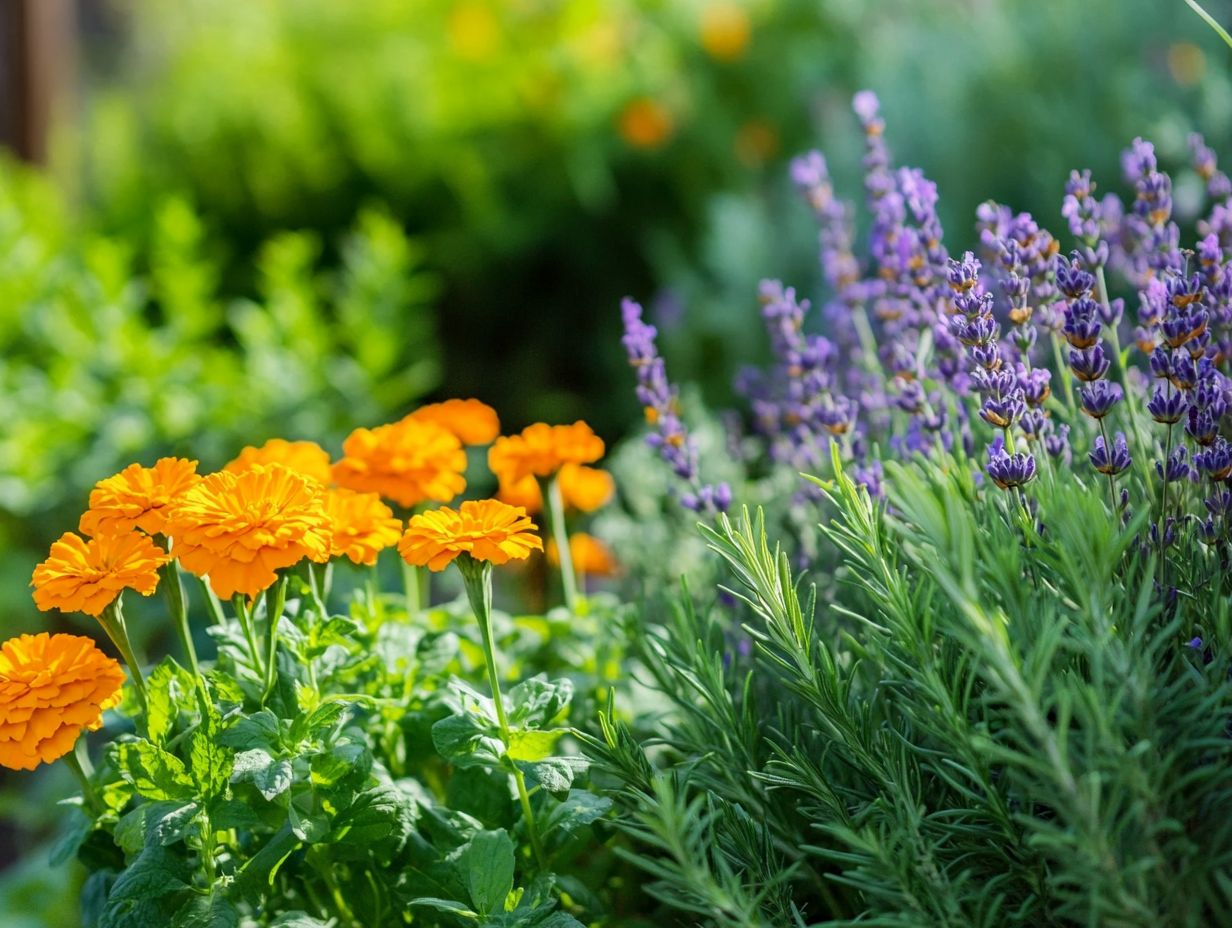
To effectively use these plants for pest control, consider various ways to manage pests that integrate natural elements. This ensures a sustainable approach to gardening and reduces reliance on chemical solutions.
Strategies like growing different plants together such as placing these beneficial plants alongside your vegetables create a vibrant ecosystem. This not only attracts various pollinators but also keeps harmful insects at bay. As a result, you enhance biodiversity and promote healthier crop yields.
Companion planting lets you pair these plants with others that repel pests or boost growth, fostering a symbiotic relationship in your garden. The outcome is a flourishing environment that supports both plant health and pollinator populations, making it a win-win for any dedicated gardener.
Are There Any Precautions to Take When Using These Plants?
Using pest deterrent plants can significantly boost your garden’s health, but taking certain precautions is crucial. You want to ensure these organic solutions don t harm beneficial insects or disrupt the local ecosystem.
Understanding the compatibility of various plants is vital. Some may repel beneficial species along with unwanted pests. For example, marigolds are praised for their pest-repelling properties, yet their strong scent might deter helpful pollinators like bees.
A well-rounded gardening strategy goes beyond planting deterrents; it s about creating a thriving habitat where plants and creatures coexist in harmony. Thoughtful planning, including crop rotation and companion planting, helps minimize risks while fostering a vibrant garden environment.
By educating yourself on these interactions, you can make informed decisions that lead to healthier ecosystems, ensuring your garden flourishes.
How Can One Incorporate These Plants into Their Garden?
Incorporating pest control plants like marigolds, lavender, and basil into your garden is a rewarding endeavor. Thoughtful planning and strategic companion planting techniques enhance biodiversity and promote healthy vegetables.
Consider the placement of these plants to create a harmonious environment that effectively deters unwanted pests while inviting beneficial insects to thrive. For example, marigolds repel nematodes and harmful pests, making them an exceptional choice alongside tomatoes and peppers. Pairing basil with tomatoes elevates flavors and helps keep aphids away.
As you plan your garden layout, pay attention to the growth habits of each plant. Ensure taller varieties don t overshadow shorter companions to maximize sunlight exposure. Using diverse plant groupings also boosts your garden’s resilience against pests, as a varied garden is generally less prone to infestations.
What Are Some Other Benefits of These Plants?
These plants not only play a vital role in effective pest control but also offer numerous benefits that contribute to a healthier garden environment. They enhance biodiversity and promote well-being through the joy of gardening.
By attracting beneficial pollinators like bees and butterflies, these plants are crucial for the pollination process essential for growing many fruits and vegetables. Additionally, their deep root systems aerate and enrich the soil with organic matter.
Some of these plants have culinary uses, infusing your dishes with unique flavors and nutrients, while others are lauded for their medicinal properties, offering natural remedies for common ailments. Incorporating such plants into your gardening practices supports the ecosystem and fosters a more vibrant, productive, and sustainable growing environment.
Frequently Asked Questions
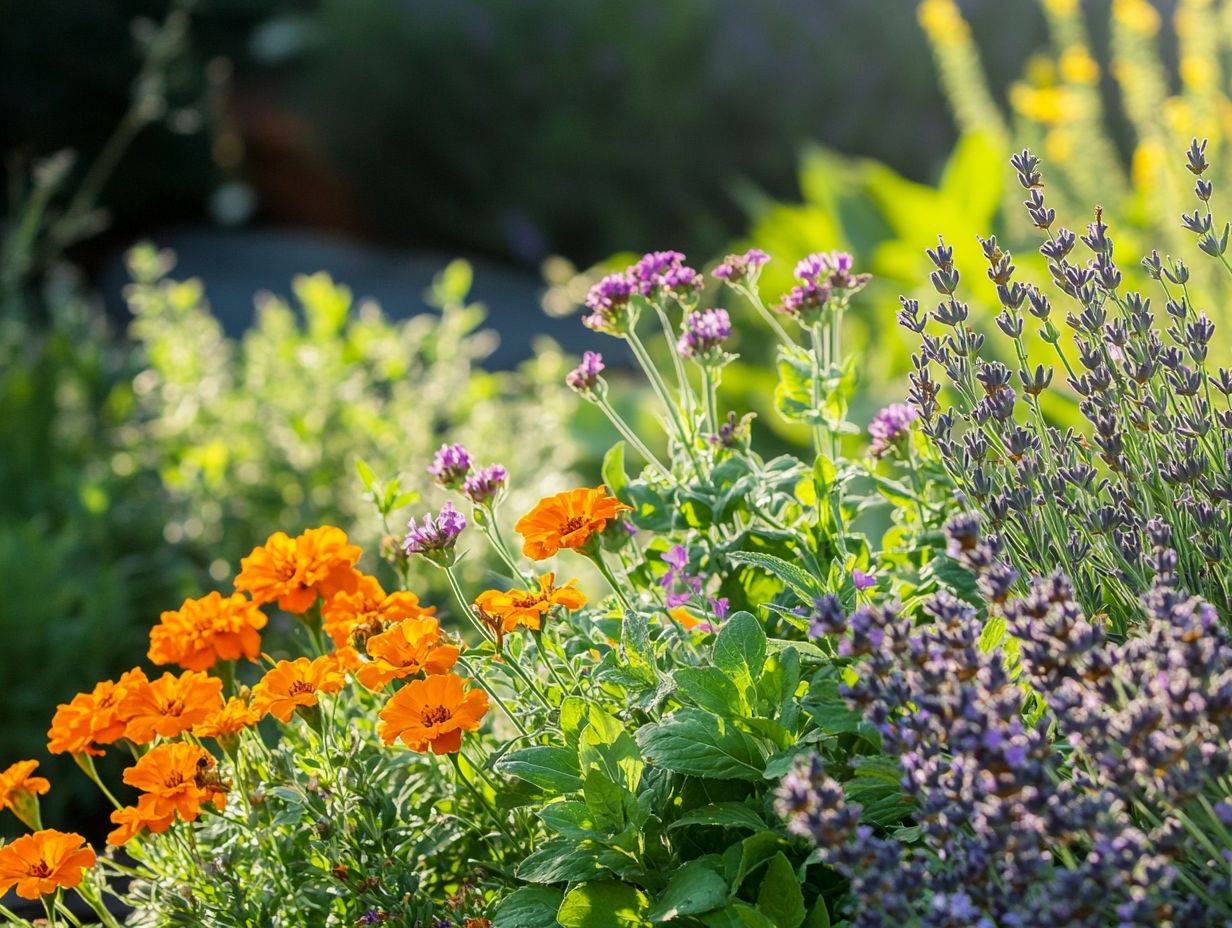
Start your pest control journey today and watch your garden thrive!
What are the top 5 plants for natural pest control?
The top 5 plants for natural pest control are marigolds, lavender, mint, rosemary, and chrysanthemums.
How do these plants help with pest control?
These plants contain natural oils that repel pests and insects. This makes them effective options for keeping your space pest-free.
Do these plants have any other benefits besides pest control?
Yes! They also add beauty and fragrance to your garden. Plus, they attract pollinators and have medicinal properties.
Are these plants safe around children and pets?
Yes, these plants are non-toxic and safe to use around children and pets. They don t require harmful chemicals for pest control.
Can these plants be grown indoors?
Absolutely! Plants like mint and rosemary can thrive indoors. Just make sure they get enough sunlight and water.
How can I use these plants for pest control?
Get creative! Plant them in your garden, make natural repellent sprays, or dry their leaves for a natural pest deterrent.

